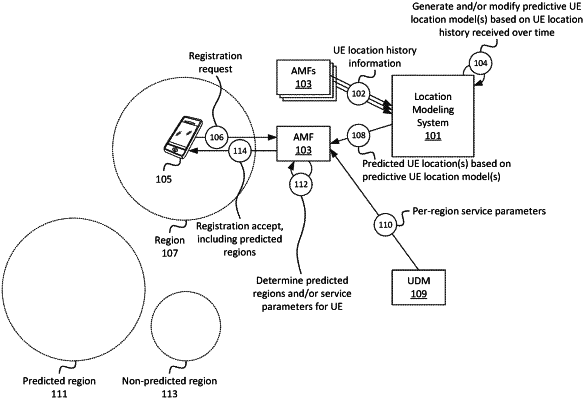| CPC H04W 8/02 (2013.01) [H04W 60/005 (2013.01); H04W 60/04 (2013.01)] | 12 Claims |

|
1. One or more devices, comprising:
one or more processors configured to:
identify one or more models that correlate attributes of one or more User Equipment (“UEs”) to respective sets of tracking areas associated with a wireless network;
receive, from an Access and Mobility Management Function (“AMF”) of the wireless network, information indicating one or more tracking areas of the wireless network in which the one or more UEs have been located, wherein the AMF determines the one or more tracking areas based on registration procedures between the AMF and the one or more UEs;
modify the one or more models based on the received information indicating the one or more tracking areas in which the one or more UEs have been located;
maintain a mapping between the one or more tracking areas and one or more respective geographical locations;
receive, by a Unified Data Management function (“UDM”) of the wireless network, a request for information associated with a particular UE, wherein the request includes attributes of the particular UE;
compare the attributes of the particular UE to the attributes of the one or more UEs associated with the one or more models;
identify, by the UDM and based on the comparing, a particular set of tracking areas with which to associate the particular UE;
identify a particular set of geographical regions that are associated with the particular set of tracking areas; and
output, in response to the request:
an indication of the particular set of geographical regions, and
an indication that the particular UE is associated with the identified particular set of tracking areas,
wherein when the particular UE moves to a first tracking area, that is not in the identified particular set of tracking areas, the UE performs a registration update procedure with the wireless network based on moving to the first tracking area, and
wherein when the particular UE moves to a second tracking area, that is in the identified particular set of tracking areas, the UE forgoes performing the registration update procedure with the wireless network based on moving to the second tracking area.
|